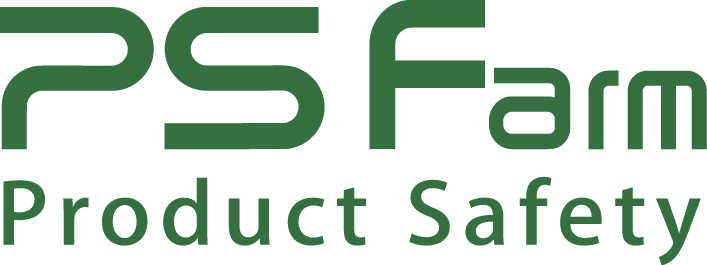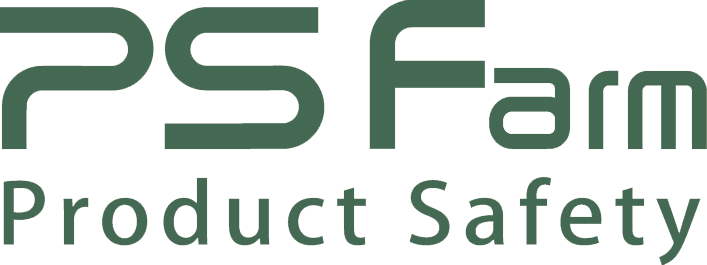(インド)BISマーク アップデート版二次電池改訂規格の実施に関するFAQ
BIS認証の二次電池規格改定手続きに関連してFAQ(アップデート版)が発行されました。(IS16046 (パート1): 2018 / IEC62133-1: 2017 IS16046 (パート2):2018 / IEC62133-2: 2017)
Updated (Revision 01):14 Nov 2019
Bureau of Indian Standards
Registration Department
Frequently Asked Questions (FAQs) on Changeover Guidelines for Implementation of revised Standards of Batteries / Cells i.e. IS 16046 (Part 1) : 2018/IEC 62133-1:2017 – for Nickel Systems and IS 16046 (Part 2) : 2018/ IEC 62133-2:2017 – for Lithium Systems
Q1 : As a manufacturer located outside India can we import Batteries / Cells as per IS 16046:2015 after the last date of implementation.
A1 : Import of Batteries / Cells after the last date of implementation is not permitted
Q2 : As a domestic manufacturer, can we manufacture Batteries / Cells as per IS 16046:2015 after the last date of implementation
A2 : Manufacture of Batteries / Cells as per IS 16046:2015 after the last date of implementation is not permitted.
Q3 : If stock of the Batteries / Cells as per IS 16046:2015 could not be exhausted by the last date of implementation , in that case what we have to do as a Stockist of Batteries / Cells ?
A3 : If product has been imported to India before the last date of implementation or manufactured by the domestic manufacturers before the last date of implementation, then the stock can be sold in India.
Q4: Can we Switchover Battery Models to revised standards, if the battery incorporate Cells as per IS16046:2015 ?
A4: Battery to be registered as per revised standard needs to incorporate Cells registered as per revised standard
Q5:We are using Batteries as a component for manufacture of our product. If the stock of our host product fitted with Batteries as per IS 160465:2015 could not be exhausted till the last date of implementation what is to be done?
A5 : Host product incorporating batteries manufactured as per IS 16046:2015 before the last date of implementation can be sold in the market.
Q6 : We are using the Batteries as a component for manufacture of our product. We have a stock of Batteries as per old Standard which could not be exhausted till 14.03.2020, in that case what we have to do?
A6 : Batteries as per IS 16046:2015 manufactured/imported before the last date of implementation can be used for manufacture of host product. The date of manufacturing for domestically produced goods and date of landing of consignments in India for goods manufactured overseas would apply for consideration against deadlines notified.
Q7 : We are using the Batteries as a component for manufacture of our product, if MeitY ask a Model for Surveillance testing but the battery in the product is not as per revised Standard , in that case our product will be accepted or not ?
A7: Batteries as per IS 16046:2015 manufactured/imported before the last date of implementation can be used for manufacture of host product.
Q8: Will separate R. No. be required within the Lithium Systems for different types of Lithium system batteries/ cells i.e. Li-ion, Li-Polymer, Li-iron Phosphate etc.?
A8 : Cells and battery need to be applied under separate registrations. Single registration is required for Lithium Systems, which will incorporate all the different types of Li chemistry.
Q9: We have submitted the surveillance fee to MeitY against our current R. No. When we get the new R. No. then can our payment be adjusted to new R. No. ?
A9: The surveillance fee matter needs to be addressed by MeitY, for Option A or as well as Option B.
Q10 : We have obtained new registration number (Option A/Option B). What will be the status of our registration as per IS 16046:2015
A10: Both registrations will run concurrently. However, registration as per IS 16046:2015 will be cancelled after the last date of implementation i.e. 14 March 2020.
Q11 : Should I go in for Option A or Option B ?
A11 : Both options have certain advantages as well as limitations. You can decide keeping in mind the number of models and your processes.
Q12: We have opted for Option A. Do we have to switchover all the Models of existing R. No. to new R.No. in one go or we can switch over in phases?
A12: Switchover can be in phases when submitting changeover (Supplementary) test reports based on earlier test reports. However, complete test reports as per revised standard need to be submitted as inclusion and not as changeover.
Q13: We have opted for Option B and obtained new registration for few models. Now we want to
know the procedure to transfer the models already existing in our old registration as per IS
16046:2015
A13: The Models already existing in the old registration as per IS 16046:2015 will continue to be valid upto the last date of implementation or validity of registration whichever is earlier. Those models can be included in new registration on submission of complete test report through an inclusion.
Q14: Which is the last date upto which BIS will accept fresh application/inclusion/renewal as per IS16046:2015 ?
A14: Fresh application/inclusion/renewal as per IS 16046:2015 will be accepted by BIS upto one month prior to the last date of implementation i.e. 14 Feb 2020.
Q15 : Battery manufacturer has obtained new R. No. as per revised standard after changeover, do we need to submit CCL updation for each of our host product using such battery.
A15: Yes, CCL updation will be necessary and may be got done by 14 Sep 2020 (six months from implementation date).
Q-16 : What will be the marking on Li-system Cell or Battery ?
A-16 : Marking on Lithium System Cells and Batteries as per IS 16046(Part-2):2018/ IEC 62133-2:2018 and further referred as per IS 16047(Part-3):2018/IEC 61960-3:2017 shall be clear and durable as given below:
– Secondary (rechargeable) Li or Li-ion
– Cell or Battery Designation as per Cl.5.1 of IS 16047(Part-3):2018
– Polarity
– Date of manufacture (which may be in code)
– Name or identification of manufacturer or supplier
– Rated capacity
– Nominal voltage
Q-17 : What will be the marking on Nickel system (Nickel-Cadmium ) Cell or Battery ?
A-17 : Marking on each Nickel System ( Nickel-Cadmium) Cell as per IS 16046(Part-1):2018/ IEC62133-1:2018 and further referred as per IS 16048(Part-1):2013/IEC 61951-1:2006 shall be durable as given below:
Small prismatic cells and Cylindrical Cells:
– Sealed, rechargeable nickel-cadmium or Ni-Cd
– Cell Designation as per Cl.5.1 of IS 16048(part-1):2013
– Rated Capacity
– Nominal Voltage
– Recommended charge rate and time or permanent charge current for ‘T’ Cells
– Polarity
– Date of manufacture (which may be in code)
– Name or identification of manufacturer or supplier
Butten Cells :
– Cell Designation as per Cl.5.1 of IS 16048(Part-1):2013
– Polarity
– Date of manufacture (which may be in code)
– Name or identification of manufacturer or supplier
Q-18: What will be the marking on Nickel system (Nickel-Metal Hydride) Cell or Battery ?
A-18: Marking on each Nickel System ( Nickel-Metal Hydride) Cell as per IS 16046(Part-1):2018/IEC 62133-1:2018 and further referred as per IS 16048(Part-2):2013/IEC 61951-2:2011 shall be durable as given below:
Small prismatic cells and Cylindrical Cells:
– Sealed, rechargeable nickel-cadmium or Ni-Cd
– Cell Designation as per Cl.5.1 of IS 16048(part-2):2013
– Rated Capacity
– Nominal Voltage
– Recommended charge rate and time or permanent charge current for ‘T’ Cells
– Polarity
– Date of manufacture (which may be in code)
– Name or identification of manufacturer or supplier
Butten Cells:
– Cell Designation as per Cl.5.1 of IS 16048(Part-2):2013
– Polarity
– Date of manufacture (which may be in code)
– Name or identification of manufacturer or supplier
Q. 19: Marking of complete Indian standard IS 16046(Part-1):2018 / IEC 61233-1:2017 and IS16046(Part-2):2018 / IEC 61233-2:2017 with standard mark for Nickel System Cells /Batteries and Lithium System Cells /Batteries respectively is not possible sometimes due to space constraints on the product. Can we mark the Indian Standard as IS 16046-1 and IS 16046-2 ?
A. 19: Standard IS 16046-1/IEC 61233-1 and IS 16046-2/IEC 61233-2 with standard mark may be used on small Cells / Batteries of Nickel System and Lithium System respectively due to space constraints.
Q. 20: BIS Grant letter mentions the product as “Sealed Secondary Portable Lithium System Cells” whereas our product is marked with “Rechargeable Lithium-ion Polymer Cell” which may not be acceptable at customs due to different nomenclature.
A. 20: It is clarified that marking clause of IS 16046 (Part-2) permits that the product “Sealed Secondary Portable Lithium System Cells” can also be denoted by “Rechargeable Li-ion Cell”. Hence both nomenclature pertain to one and same product and are acceptable.
Q. 21: Our product is Rechargeable Lithium Batteries which are tested and certified as per IEC62619 Internationally. Will BIS registration be required on these batteries?
A. 21: Safety requirements for large format Secondary Lithium Cells and Batteries for Industrial Applications such as Stationary applications (Telecom, UPS, Utility switching, Emergency power and similar applications) and Motive applications (Forklift truck, Golf cart, AGV, Railway,
Marine and other mobile applications) are tested as per IEC 62619 whereas BIS registration is compulsorily required for Sealed Secondary Portable Lithium System Cells / Batteries as per IS16046(Part-2):2018/ IEC 61233-2:2017.
Q.22: Will BIS registration be required on Butten Cells / Coin Cells under Compulsory Registration Scheme?
A.22: Yes, BIS registration is required on Butten Cells as per IS 16046(Part-1):2018/IEC 62133-1:2017 – Nickel System and on Coin Cells as per IS 16046(Part-2):2018/IEC 62133-2:2017 –Lithium System under Compulsory Registration Scheme.


